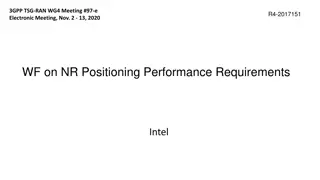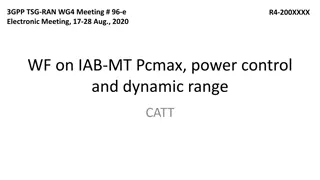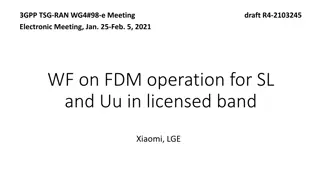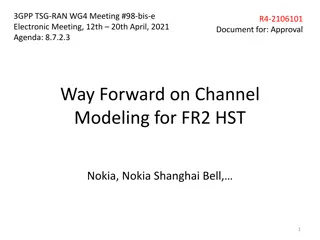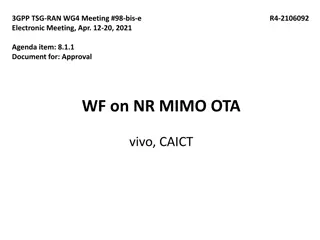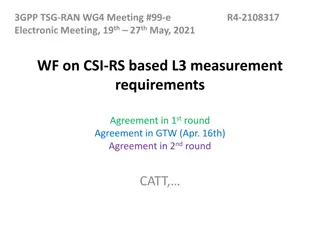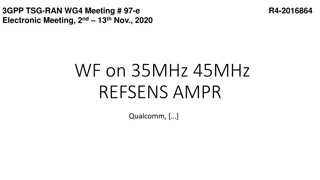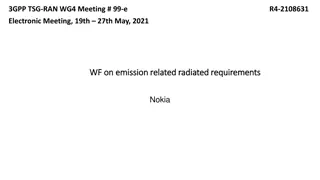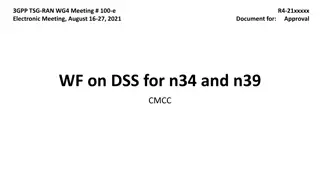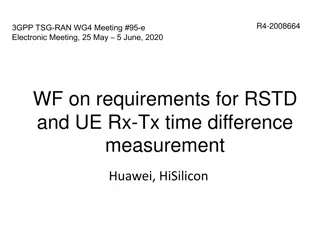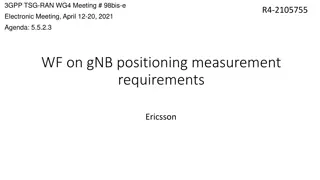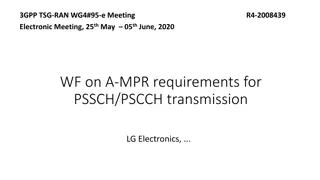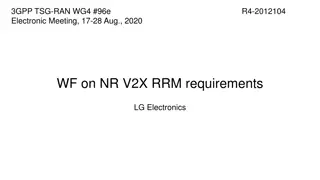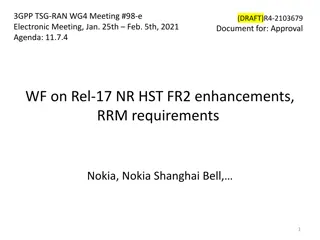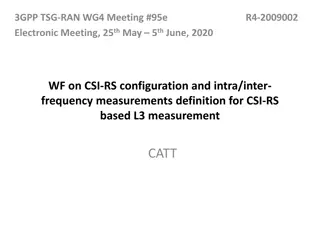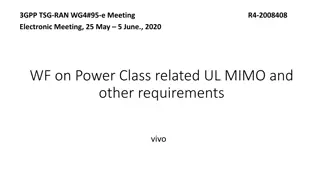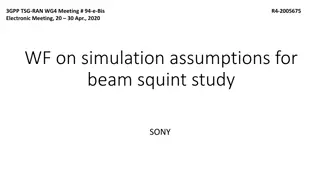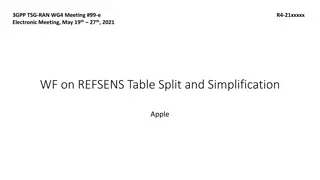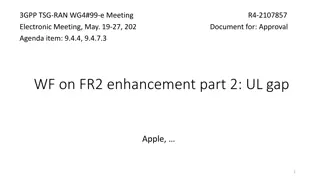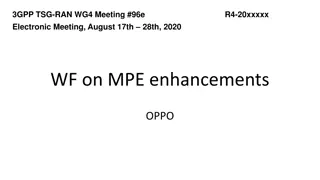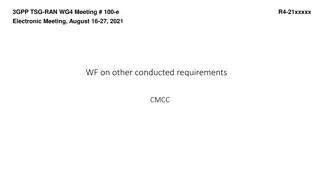Understanding Beam Squint Effects in 3GPP TSG-RAN-WG4 Meeting
Beam squint effects in 3GPP TSG-RAN-WG4 meeting are discussed, focusing on the degradation of spherical coverage due to frequency separation between primary and secondary component carriers. The impact on CBM inter-band DL/UL channel aggregation and intra-band CA is also explored, highlighting the need for relaxation considerations in EIS spherical coverage requirements. Companies are encouraged to provide input on simulation assumptions for better understanding and verification of beam squint effects on various aspects of FR2 CA testing.
Download Presentation

Please find below an Image/Link to download the presentation.
The content on the website is provided AS IS for your information and personal use only. It may not be sold, licensed, or shared on other websites without obtaining consent from the author. Download presentation by click this link. If you encounter any issues during the download, it is possible that the publisher has removed the file from their server.
E N D
Presentation Transcript
3GPP TSG-RAN WG4 Meeting # 95-e Electronic Meeting, 25 May 5 Jun., 2020 draft R4-2008488 WF on FR2 Beam Squint Effect SONY, .
Background Conducted power in transmitted CCs Beam squint happens when DL BM reference signals and UL/DL control and/or data channels of interest are not within the same CC, see figure on right Beam squint causes a received signal to have a frequency selective characteristic It is a radiative-domain impairment It causes gain droop, like impairment caused by active circuitry in the conducted domain Problem statement: Given CC1 and CC2 separated by f and assuming the UE uses the codebook entry optimized for CC1, what is the degradation of CC2 spherical coverage? RAN4 has further discussed the impact due to beam squint effect on the requirement of CBM inter-band CA and intra-band CA 3GPP TSG-RAN WG4 Meeting # 95-e. Blue CC squints away from target direction due to separation in frequency from reference signal gNB Ref signal for BM Power received OTA x dB Difference in antenna gain, x dB UE 2
WF on CBM inter-band DL CA and Intra-band DL CA For EIS spherical coverage: CBM inter-band DL CA: Including radiated relaxation due to the beam squint effect in the CBM inter-band CA EIS spherical coverage as below: For CBM inter-band CA EIS spherical coverage, allowing X dB relaxation (at spherical coverage point on CCDF) on the secondary CC. X depends on the frequency separation between primary and secondary CCs. The relaxation due to beam squint shall be included in the general inter-band CA relaxation. Intra-band DL CA: no impact to consider because spherical coverage requirement is absent. The following information shall be captured in the TR for information, based on company contributions CA EIS degradation quantified in terms of delta gain CDF, due to frequency separation from the CC configured as the beam management reference signal. Companies are encouraged to provide input on the value of X based on the agreed simulation assumption from R4-2005675 for the CBM inter-band CA spherical coverage requirement discussion For REFSENS : The beam squint effect on the CBM inter-band REFSENS is FFS, companies are encouraged to verify if best EIS value is impacted. 3
WF on Intra-band UL CA The beam squint effect on the Intra-band UL CA is FFS, companies are encouraged to verify if there is impact to FR2 CA EIRP (peak and spherical coverage) for FS <= 1400 MHz 4
WF on Beam management reference signal location for FR2 CA test In FR2 CA cases, requirements apply when the BM RS is provided in a CC with a configured UL BWP BM RS shall be provided in Pcell for CBM inter-band CA and intra- band CA. BM RS shall be provided in Pcell and one of Scell in IBM inter-band CA . 5
Reference R4-200XXXX Email discussion summary for [95e][123] NR_RF_FR2_req_enh_Part_3 Moderator (Qualcomm Incorporated) 6


